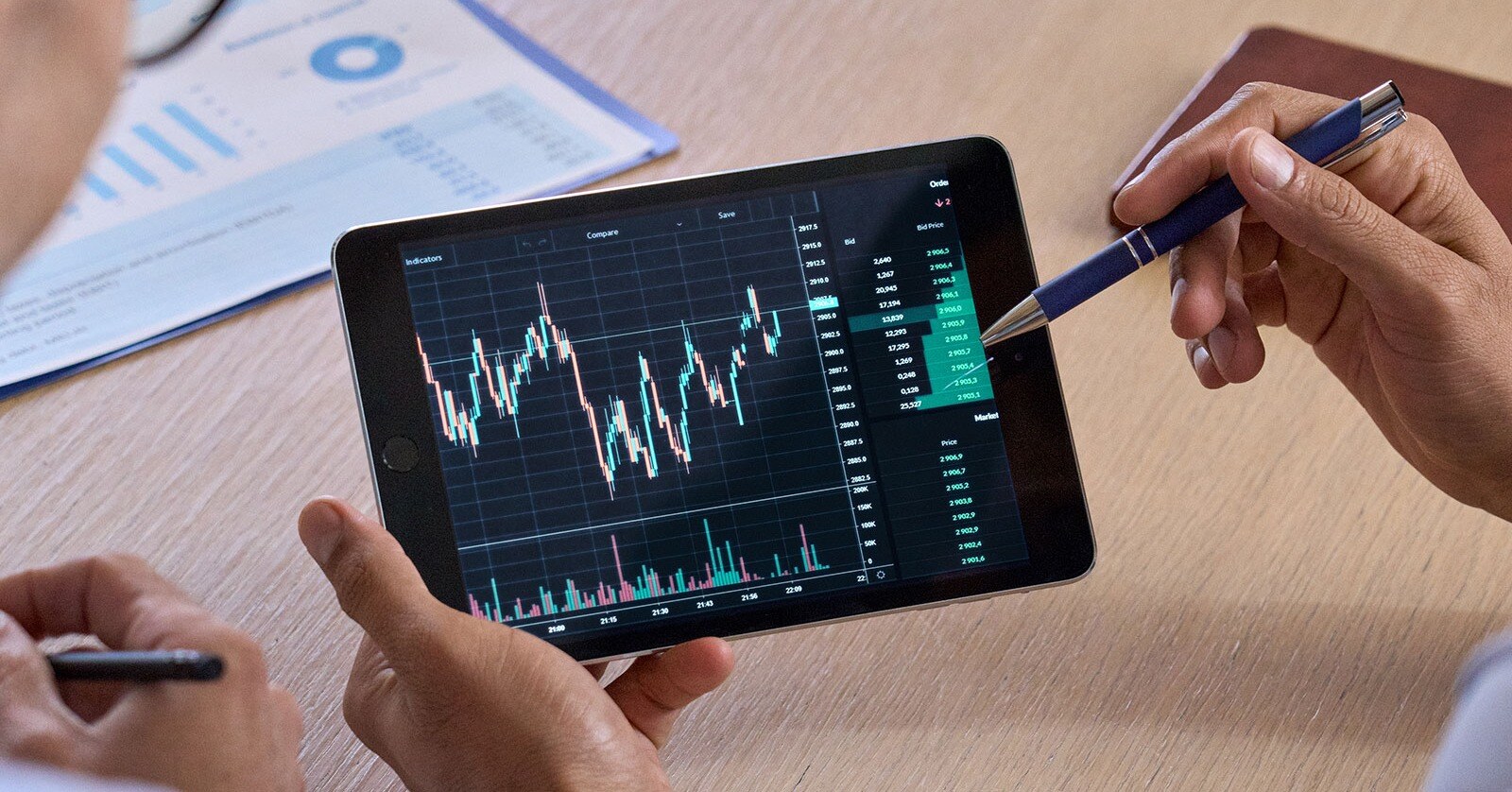After understandable volatility in the world’s capital markets last March, the recovery took hold throughout the second half of 2020 and into 2021, but with one key difference. The number of retail investors, those non-professional individuals who buy and sell funds and securities, has risen dramatically, particularly in the European Union.
With individual investors exerting more influence over the market, investment companies need to be more aware than ever of the personal trading of their staff. Employee trade monitoring is a must if hedge funds, investment advisors and asset managers are to comply with strict regulations regarding market abuse and to avoid conflicts of interest.
The numbers in the EU show the trend in action:
| More retail investors | French regulator AMF reported 70,000 more individuals entering the French stock market in the first quarter of 2021, making 18 million transactions – a record for the market. |
| Bigger turnover from retail investors | Euronext data from May 2021 showed that markets in Lisbon, Amsterdam and Paris saw the retail share of turnover rise from 4.5% in 2020 to 4.7% for this year to date. |
1. Personal account dealing (PAD) monitoring laws and regulations
The Markets in Financial Instruments Directive II (MiFID II) requires investment companies to monitor the personal trading of relevant persons within their organisation. These relevant persons could hold any position in the firm, from the board level down to contractors. The monitoring requirement applies to any trade they carry out on the market that is outside the scope of their usual work.
The employer must:
- ensure that all relevant persons are aware of their obligations to disclose their personal trading.
- Install a system to ensure they are informed about personal trading. This could be a requirement for the relevant person to disclose their trades in writing or it could be through an automated process put in place to identify such transactions.
- keep a record of relevant persons’ transactions as well as a note relating to any permission or prohibition communicated by the compliance department.
In some cases, there is a potential for the individual to benefit from being in possession of inside information which is in contravention of the Market Abuse Regulation (MAR). This might be when there is a risk that their interest in the trade might mean they fail to meet their obligation to flag suspicious orders or transactions, or where there is some other kind of conflict of interest (with one of the firm’s clients, for example). Companies should have a system in place to recognise this and stop these transactions from being made.
2. Steps to better monitor employee personal trading
2.1 Eliminate data gaps
Logging employee personal trades in paper form and from oral reporting is prone to mistakes, lost information and, therefore, data gaps. Monitoring employee trades digitally allows you to automate the process and set parameters for acceptable personal trading behaviour that can be monitored constantly.
If everyone is directed through the correct digital channel, all of the data is available in one place, in a machine-readable format that makes auditing and compliance monitoring much easier than trawling through disorganised paperwork.
Each business will have its own requirements to fit its policies. If you’re looking for a personal account dealing monitoring solution that can be tailored to your needs, try TradeLog.
2.2 Create blackout lists or restricted lists
It’s best to predefine restricted types of trades on your online compliance platform so that it can instantly alert you to a potentially inappropriate transaction. In addition, you can initiate black-out periods where employees cannot trade in certain securities, potentially whilst they are advising on or conducting client trades on the same product.
2.3 Automate employee trade pre-clearance approval
When you automate the process of approving or prohibiting trades in advance, you prevent staff members from going through the time-consuming task of analysing every single potential transaction personally.
You should direct employees to the pre-clearance section of the digital tool you use for employee trade monitoring when they want to take part in a transaction. In this tool, you pre-load criteria that the transaction must meet in order to allow it. You can also add restrictions that will automatically decline clearance when a transaction will violate them.
2.4 Determine post-trade rules
In addition to pre-clearance rules, you should also come up with the process for checking, reviewing and verifying already executed trades. This can also be automated when you’re using an online platform. You can add rules into the programme so that it can send a notification to the compliance officer and let them know that they need to investigate.
2.5 Automate the gathering of employee attestations
Rather than chasing employees to have them log and attest to their personal trades in commodities, mutual funds, derivatives and more, you can automate the process. This helps speed up an essential part of your compliance workflow and provides a single entry point for employee trading data, securities holdings and personal account information, rather than relying on a number of different communication methods.
2.6. Prepare for audits
With strict regulations around employee trade monitoring, you have to be prepared for internal and external audits. The automation of the process means that there is always a paper trail and you can run internal compliance monitoring reports easily to check on your progress.
In addition, you can see the details of all pre-clearance requests and order attempts by employees, along with the decision made by your compliance platform and the reasons the trade was or was not allowed. This shows that your processes are working and lets auditors check that you are following the rules.
3. Tips to build a more resilient PAD compliance programme
3.1 Document all compliance properties
Make sure that your employees know exactly what is expected of them in terms of compliance for their personal trading activity. A personal trading policy or code of ethics is essential to show that you have done everything you can to meet the MiFID II requirement of educating staff. Here is an example policy from BNY Mellon.
Your policy should tell employees what they can trade and what they are prohibited from trading. For example, it might be that, as a matter of course in their line of work, they will have access to inside information about a client. They should be prohibited from trading the stocks of this organisation.
The policy should also inform employees about the procedure for making and reporting trades. This can mean mandating that employees should apply for pre-clearance before they make a personal transaction. It can also refer to employees buying and selling stock in your own company. Potential conflicts of interest should also be covered, including front-running a client’s order — the relevant person holding off from making a big trade for a client long enough to buy stock personally before the rise in value after the client’s trade.
3.2 Schedule regular compliance audits
By regularly auditing your own processes, you make sure the system is working as it should. You can check if the employees are following the correct procedure and if your programme is correctly screening for restricted lists, internal investment policies, black-out periods and more.
Running and analysing transactions reports regularly means that you are ready for any external compliance audit.
3.3 Implement channels for further analysis and review
Of course, there will be some circumstances in which the employee will feel that an automated restriction on a trade is incorrect, or when the post-trade review shows that there has been a violation. This is when you need a channel where you can escalate cases of personal securities transactions that need further scrutiny.
The compliance team should control these channels and review and analyse the decisions made by the personal account dealing compliance programme, seeking subtle anomalies that might suggest a different outcome.
4. How can Chief Compliance Officers keep up?
The EU is constantly refining its regulations in order to best protect the financial system across the union. As the nature of the market changes – including with the influx of retail investors, for example – the regulations have to keep pace to ensure that they prevent market manipulation. This makes it difficult for CCO professionals to keep up.
A digital solution has the capabilities for processing the personal account dealing of your employees while working in line with the latest laws and regulations in all of the markets in which you operate.
5. Conclusion
It is understandable that your employees will take a keen interest in the markets outside of work as well, but their portfolio should always be kept separate. To ensure purchases or sales do not result in a conflict of interest with your clients or contravention of the Market Abuse Regulation, it’s best to have a robust employee trade monitoring process in place.
Using a digital solution like TradeLog takes a lot of the stress and time out of ensuring personal account dealing compliance and helps you remain on the right side of the law. Try TradeLog today to find out what it can do for your business.
6. References and further reading
Share this post
Article Summary
- 1. Personal account dealing monitoring laws and regulations
- 2. Steps to better monitor employee personal trading
- 2.1 Eliminate data gaps
- 2.2 Create blackout lists or restricted lists
- 2.3 Automate employee trade pre-clearance approval
- 2.4 Determine post-trade rules
- 2.5 Automate the gathering of employee attestations
- 2.6 Prepare for audits
- 3. Tips to build a more resilient PAD compliance programme
- 3.1 Document all compliance properties
- 3.2 Schedule regular compliance audits
- 3.3 Implement channels for further analysis and review
- 4. How can Chief Compliance Officers keep up?
- 5. Conclusion
- 6. References and further reading





